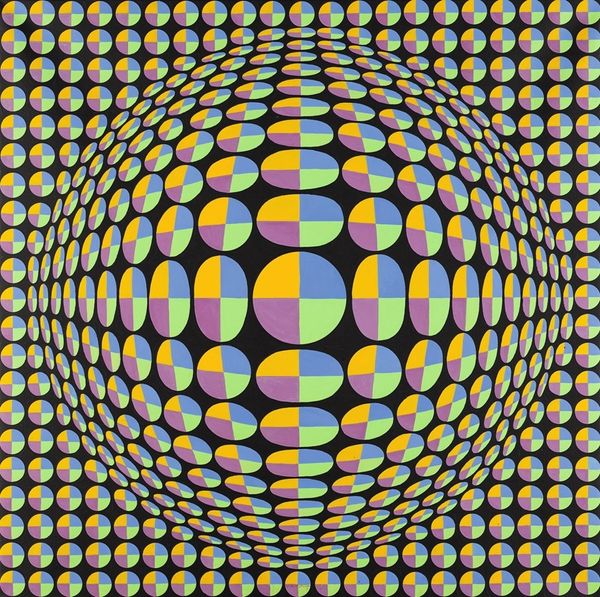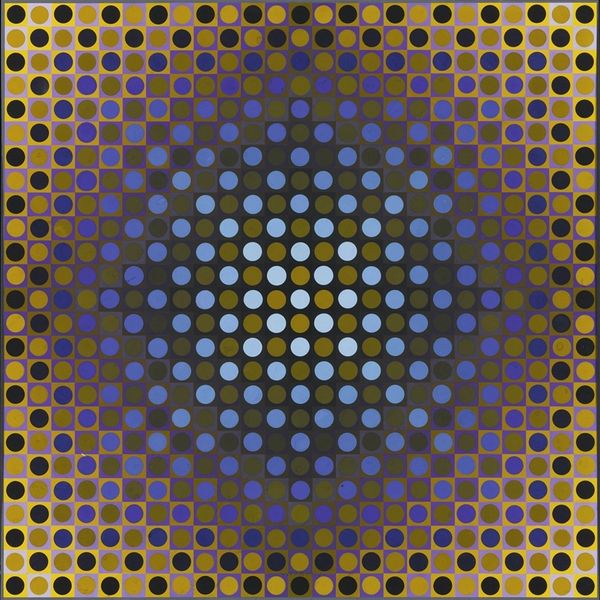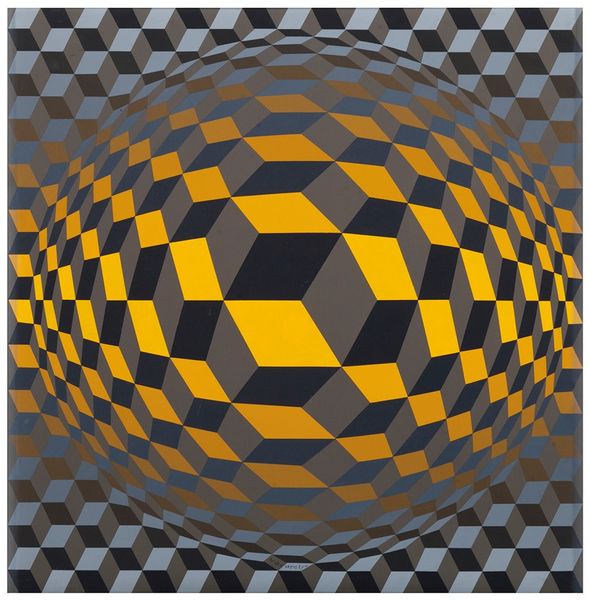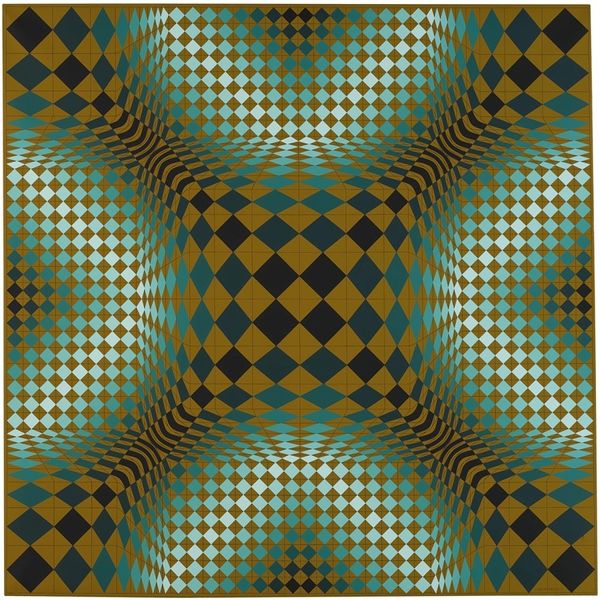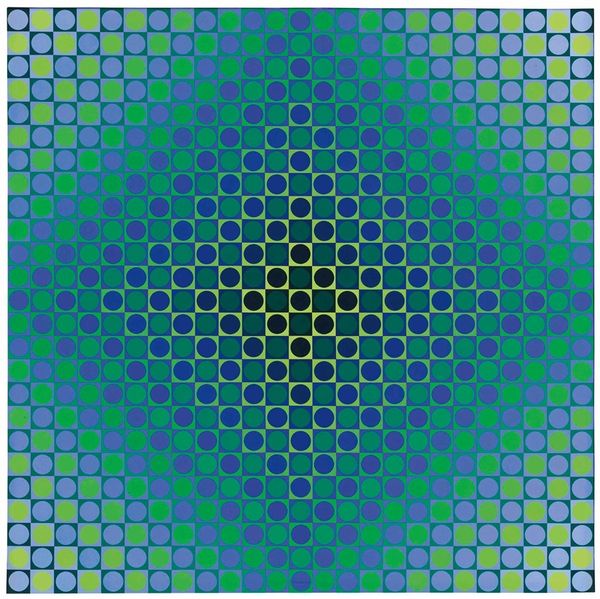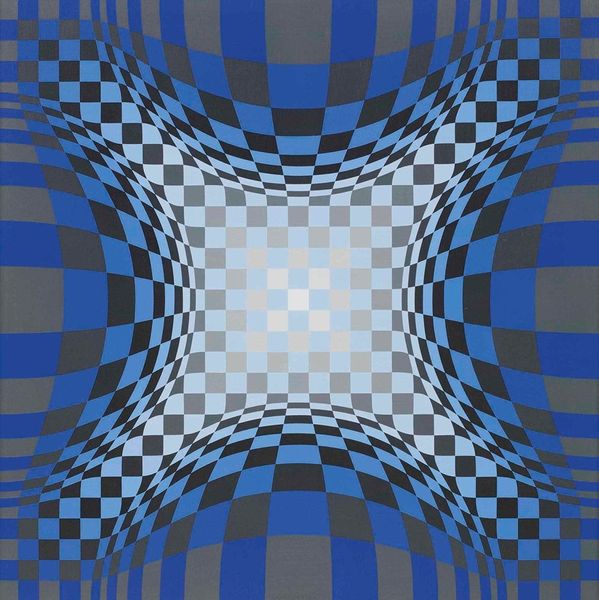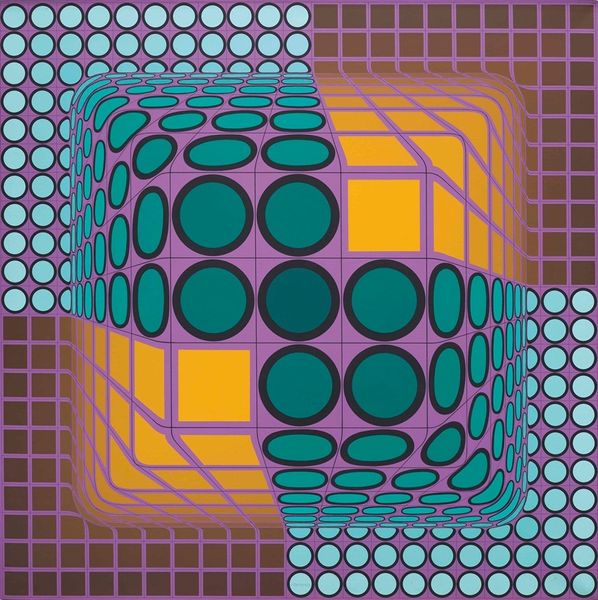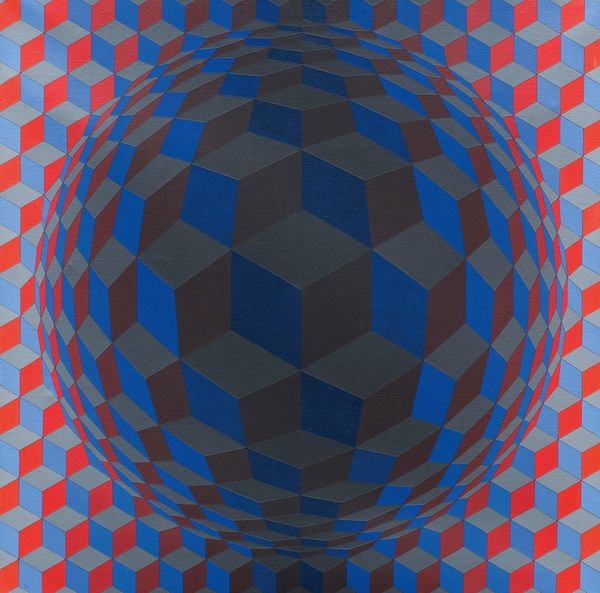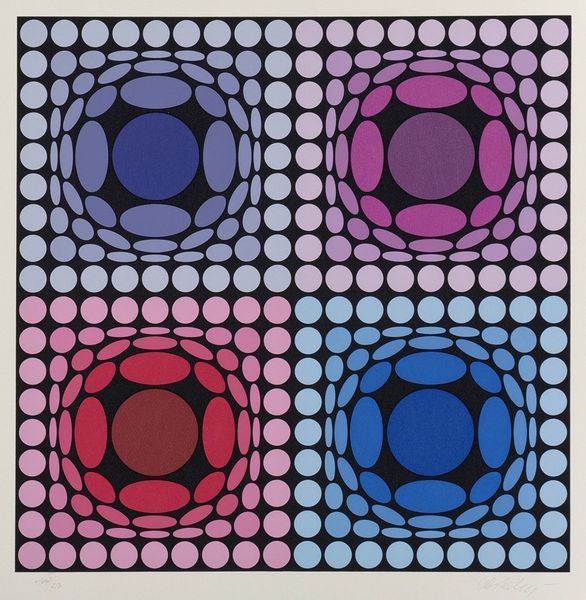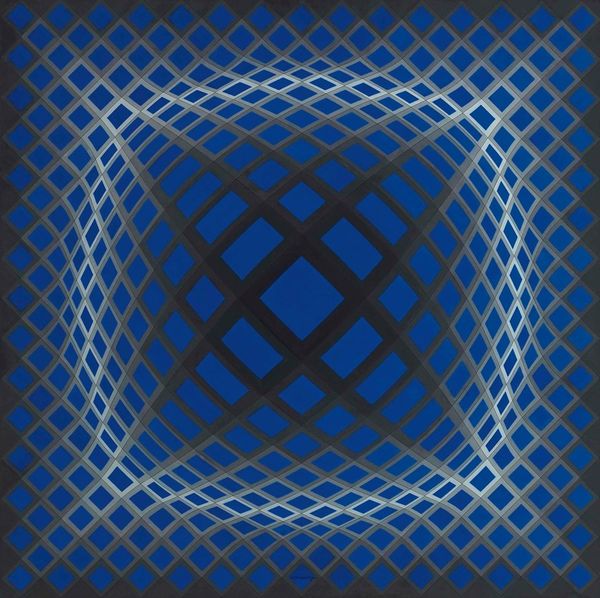
acrylic-paint
#
op-art
#
acrylic-paint
#
abstract
#
geometric pattern
#
abstract pattern
#
minimal pattern
#
organic pattern
#
geometric
#
geometric-abstraction
#
repetition of pattern
#
vertical pattern
#
abstraction
#
pop-art
#
pattern repetition
#
layered pattern
#
combined pattern
#
modernism
#
repetitive pattern
Copyright: Modern Artists: Artvee
Editor: Here we have Victor Vasarely's "Tri-Vega" made in 1975, seemingly from acrylic paint. It feels quite retro to me, and I'm immediately drawn to how the repeating circles create this illusion of depth. What strikes you about it? Curator: Well, immediately, the "how" of its production is paramount. The smoothness achieved with acrylic suggests an industrial process, a separation of the artist's hand from the canvas. Vasarely aimed to democratize art through reproduction. This wasn't about unique, hand-crafted objects, but readily available images. The grid itself speaks of modularity, almost like a building block. Editor: So, the *making* of it, and its potential for mass consumption, is central to understanding it? Curator: Precisely. Think about the materials readily available at the time, the rise of synthetic pigments, the machinery that allowed for precise reproduction. This is about accessibility and bringing art to the masses, almost like a product. Were these materials and processes seen as "artistic" before Pop Art? Where were acrylic paints being used at this time? Editor: I see, shifting the focus from individual expression to broader social access and material production… Almost challenging the preciousness often associated with fine art? Curator: Exactly. It encourages us to ask questions about labor, consumerism, and the shifting definitions of artistic skill, rather than individual vision. What do you think of the colours? Do you see them as natural, or somehow synthetic too? Editor: Now that you mention it, they do feel very manufactured, intentional. It definitely makes you think about the materials and processes behind it, more than just seeing it as an image. Thanks for pointing that out!
Comments
No comments
Be the first to comment and join the conversation on the ultimate creative platform.

